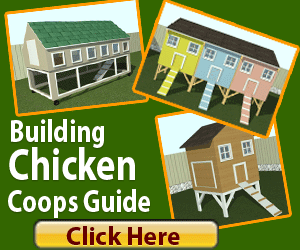Commonly Used Terms for Chicken Raising.
Bantam: A type of chicken that is about half the size of the standard breed of chickens. These types of chickens are usually bred for ornamental reasons.
Bedding: Used for the nesting area of the chicken. Usually composed of shavings of wood, haystack pile, or newspaper. Main purpose is for the absorption of droppings and odor. Furthermore, it can act as a cushion for eggs when the hen lays one.
Brood: Two meaning – 1. Hens incubating their chicks. 2. A flock of baby chickens.
Broodiness: A chicken’s desire to incubate their chicks – unfertilized or fertilized. Note: broodiness can make an egg hatch or spoil it.
Candling: During the night a procedure is used to light up with a small light bulb. Also used to find out if an egg is fertilized or not by shining the light through the egg. An ideal way to separate the eggs with a growing embryo and those that are good to sell or consume.
Capon: A castrated rooster.
Clutch: Fertilized egg groups that hens tend to incubate.
Cockerel: A juvenile or young rooster.
Comb: Ever noticed the red rubbery, flat piece of flesh hanging on top of a chicken’s head. Roosters have a more prominent comb than hens.
Coop: Another term to describe a house of chickens.
Crop: Part of a chicken’s digestive system that is found in the esophagus. This is the first stage where digestion starts.
Droppings Tray: A tray used to collect chicken droppings. Use the droppings in place where fertilizers or manure is required.
Dust bath: A natural way that a chicken protects itself from lice and mites that may invade their feathers and feed on their blood. A chicken will dig a hole in the ground and immerse their bodies in earth that has been loosened. The chicken will rub itself into the dirt until it is content and satisfied of it’s efforts.
Feeder: An auto feeding container that delivers and holds feeds for chickens.
Fertilized egg: Is an egg that carries an embryo later to become a chick.
Grit: Bits of rock, sand or clay that chickens tend to consume to aid in digestion.
Hackles: Chicken’s neck feathers.
Hen: A female chicken.
Incubation: This is process of caring of the fertilized egg to mature into an embryo and then a chick. Heat is applied to maintain constant temperature until the chick has grown sufficiently to hatch out. Incubation takes about 21 days before the eggs are expected to hatch.
Layer feed : Specially formulated feed to assist hens into laying eggs. Food for the chickens.
Molt or molting: Usually happens once a year where a chicken will shed some it’s feathers to regrow new ones. During the molting season the chickens will not produce any eggs.
Nest box: Basically a nest built for chicken to lay its eggs. As a minimum one nesting box is needed for 4 hens.
Non-setter: A breed of chicken that doesn’t show any desire to care for it’s chicks.
Ornamental breed: Show birds often seen and used in fairs to showcase their stunning stature and appearance to the crowds. These breeds do not function as egg layers or for meet consumption.
Poultry show: A type of competition involving ornamental breeds of chickens. The owners get awarded for their efforts. Judges are used to give points on attributes. Other poultry like ducks and geese are also part of the competition.
Production breed: Chickens that are used in mass production of eggs. Usually, chickens of this type are either caged or free roaming.
Pullet: A juvenile or young hen.
Roost: The time of the day when a chicken has decided to rest on a pole and/or to sleep. Another term used is perching.
Rooster: A male chicken.
Roosting pole: A perch that is made out of wood. It can be constructed and put inside the coop.
Rumples: A breed of chicken that has no feathers on their tails.
Run: An area connected to the coop where chickens can roam around freely.
Scratch: A treat made for chickens that are composed of different kinds of grains; this is the one that is scattered on the ground. It can also be referred to as the behavior chickens make wherein they use their claws to dig up either worms, bugs, rocks, and tiny little insects that are inside the ground.
Sexing: A method used determine the sex of a chicken.
Sex link: The process of determining a chicken’s sex before the eggs hatches.
Shanks: Part of the chicken’s legs which can be seen at the bottom.
Sickles: A rooster’s tail feathers.
Spur: This is the protrusion that is seen on the shank of a rooster that used for fighting.
Started pullet: A juvenile hen that has started laying eggs.
Starter feed: Specially formulated food/feed for baby chicks.
Vent: It is the part of the chicken where poop, eggs and other waste matters pass.
Waterer: A contraption that delivers water when needed in the coop.
Wattles: It’s similar to a chicken’s crow but instead of being on top of the head, it’s found under the neck of the chicken. It is usually red and has rubber-like flaps.
Wheezer: In colloquial terms, it’s what they call a chicken’s butt.
Wormer: Veterinary term used to describe ridding animals of parasites.


